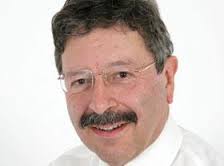News Americas, LONDON, England, Fri. Mar. 15, 2019: Health tourism is an enormous and highly competitive global business.
Reliable estimates indicate that by 2021 the worldwide health tourism market will reach somewhere between US$46.6bn and US$125bn per annum, and is experiencing a compound annual growth rate of somewhere between 13% and 19%. In contrast the World Travel and Tourism Council estimates that average growth rates for Caribbean tourism is about 3.8% per annum.
Confusingly, however, health tourism as a concept is ill defined.
At one end of the spectrum it involves medical tourism in the form of advanced medical procedures, elective interventions, facilities for convalescence, care homes and sheltered housing for the elderly. At the other it involves wellness in the form of spas and a range of non-medical ancillary services. While medical tourism is motivated by a need for treatment, wellness tourism is more proactive and related to improving an individual’s quality of life.
Taken at face value Caribbean nations with good connections by air, advanced medical facilities, and having either the ability to attract well qualified physicians, support staff and therapists, or in the case of Cuba with a surplus of local health care professionals, ought to be well placed to capitalise on all aspects of health tourism.
In an indirect indication of this and the potential of the health, medical, and wellness services to grow the tourism economy, the Cuban hotel chain Islazul announced recently that it had entered into a health tourism project with Comercializadora de Servicios Médicos Cubanos (SMC), an entity that provides advanced and routine medical services to foreign visitors.
Speaking to the media, Rasiel Tovar, the President of Islazul, said that the 117-property national chain plans to develop its existing and new small hotels close to SMC’s rehabilitation centres. According to Mr Tovar the group will remodel the services that such hotels offer to support the development of the country’s offshore medical services.
Cuba apart, which is something of a special case, it is possible to identify Cayman and Turks and Caicos, as having private and public-private medical tourism models that work.
For example, Health City Cayman Islands which has benefited from having the support of Narayana Hrudayalaya a profitable global medical group, is associated with a high-profile international medical figure. It has a wealthy expatriate and Caymanian domestic market, has good air access from North America and the wider world, has state-of-the-art technology and operates within the regulatory constraints of a UK offshore jurisdiction.
Much the same holds true of the Canadian Interhealth, operated TCI Hospital on Providenciales and Grand Turk which provide services to an increasing number of tourists and uninsured patients – typically Haitian migrants who government requires it to treat – but has the added advantage of an arrangement whereby Islanders have full access at no cost under the country’s National Health Insurance Plan.
In most of the rest of the region the same confluence of factors does not exist, making the Cayman and Turks and Caicos medical models hard to replicate.
Moreover, some recent Australian and Canadian academic studies suggest that given the size of most Caribbean islands the throughput of visitors may be not be sufficient to keep medical pricing competitive, or to be able to maintain high levels of continuing investment needed to meet international patients’ expectations about surgical interventions using robotics and artificial intelligence.
This suggests that most successful future investments in medical tourism in the Caribbean are likely to be focused on small specialized private clinics providing limited services such as cosmetic surgery, the replacement of joints, dentistry, in vitro fertilization, full medical checks, and facilities for convalescence.
Management consultant produced studies indicate that there is a huge and growing US and Latin market for such services and procedures, as well as a unique opportunity with some of the four million or so in the Caribbean Diaspora who might prefer treatment ‘at home’ and a growing demand for recuperation in a warm pleasant environment.
Separately, wellness tourism offers a different but just as significant economic opportunity.
The not-for-profit Global Wellness Institute estimates that international wellness visitors spent 53% more than the average international tourist in 2017, and that primary and secondary wellness spending in Latin America and the Caribbean was US$34.8bn, although the Caribbean did not figure among its top 20 global destinations.
Not well defined ‘wellness’ includes, spas and thermal springs, natural healing, weight loss, treatment for substance abuse, overall health checks, homeopathy, beauty and anti-ageing treatments, yoga and other natural therapies.
Significantly, wellness tourism avoids the health inequity that sophisticated large private medical facilities can cause, does not distort public health care systems, or alienate voters or committed public health care professionals. It. It also has little if any effect on the already alarming deficit in health care professionals in some parts of the region caused by recruitment agencies enticing individuals away to work in Europe, North America and other parts of the world.
For this reason, Islazul’s plan to fuse wellness with post-operative and convalescent care, utilising existing and new properties in rural locations is worthy of closer study by both the tourism and the medical sector in the rest of the region.
Its announcement suggests that there are commercial opportunities for clinics and small and medium sized wellness enterprises to begin to work more closely with hotels, to offer facilities better related to the size the Caribbean market.
The Caribbean continues to face a serious challenge as to how it sustains the delivery of free or low-cost high-quality public health care. While wellness tourism and small clinics providing specialist services offer no immediate panacea, they should be seen as important primary and secondary adjuncts to the staple long-stay visitor offerings of beach and sun. As such they enlarge the region’s tourism profile, increase employment and visitor spend, and ultimately help grow the tax revenues that enable free public health care.











